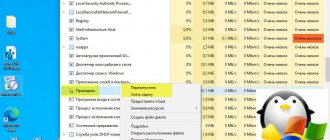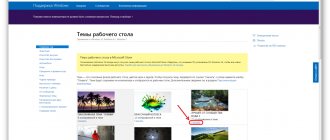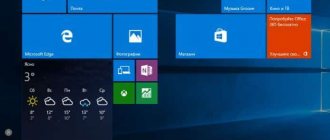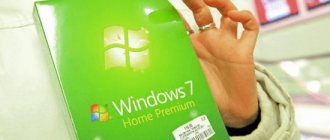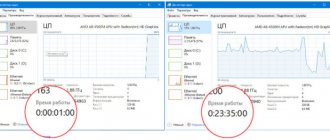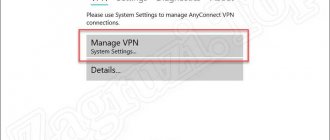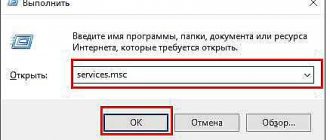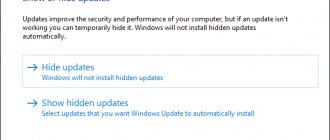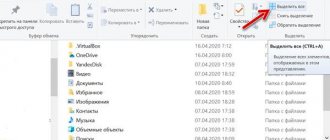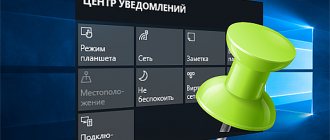Reward accrued
This material was written by a site visitor and was compensated for.
In March 2020, Microsoft boasted in a blog post that their Windows 10 operating system is installed on more than one billion devices worldwide. It turns out that almost every seventh person on the planet uses their product. Pirated copies are not taken into account. Following the end of official support for Windows 7, and in order to ensure a smooth and secure experience, Microsoft recommends that users update their PC to the latest version of Windows 10, which is updated every six months. In most cases, they are aimed at improving the performance, security and speed of the system.
Microsoft is positioning its latest release of Windows 10 May 2020 Update (version 2004), the distribution of which has already started worldwide, as a full OS update, and not cumulative, as is the case with the November 2020 update (version 1909).
announcements and advertising
2080 Super Gigabyte Gaming OC for 60 rubles.
Compeo.ru - the right comp store without any tricks
RTX 2060 becomes cheaper before the arrival of 3xxx
Ryzen 4000
series included in computers already in Citylink
The price of MSI RTX 2070 has collapsed after the announcement of RTX 3xxx
Core i9 10 series is half the price of the same 9 series
The price of memory has been halved in Regard - it’s more expensive everywhere
If you have already received a new update, write about it in the comments. If not, then there is an opportunity to do everything manually. And so, you can start installing the new version of Windows 10, and we will begin our review.
New Cortana
The most significant changes in the May update occurred in this area. However, for users of the Russian version of Windows 10, they are also the most useless, since Cortana has not yet learned the “great and mighty” language. Based on this, we will not analyze all its new “tricks”, we will only outline the most important thing.
Cortana is now a separate system app that runs in its own resizable and movable window. It also received a new user interface with support for dark and light modes, as well as the ability to update through the Microsoft Store, regardless of the operating system. This means that Microsoft can continually add new features to it without having to wait for a new version of Windows 10 to arrive.
Previously, Cortana displayed search results in a bar just above the search field, in the same way Windows Search does. Now the search takes place in the application, and its results are displayed there.
With the new update, Microsoft marketers began to position the Cortana application as a digital assistant that can significantly improve the user experience. For this reason, most smart home control functions were removed, for example, turning lamps on and off or playing music. The only functions left are those related to schedules, calendars, email newsletters, etc. The improved email feature lets you use Cortana to compose emails. For example, you could say, “Send an email to grandma telling her to bake a cake,” or “Show me emails from Bill Gates.” An improved calendar can do the same thing, but for the purpose of creating appointments.
The new update also includes text commands. Apparently Microsoft figured that not everyone is comfortable talking to their computer in close proximity to other people, especially at school or work, so they added the text commands feature. However, voice control is here to stay. Now all conversations with Cortana, as well as correspondence with, for example, your grandmother, will be displayed as text bubbles in a scrolling list, which you can refer to later if necessary
New search
In order to quickly display search results, Windows 10 indexes your hard drive or SSD. While this is useful, indexing can slow down your PC, so some users disable it altogether. With the new update, indexing will only occur when the computer is not very busy or idle, which should theoretically make it faster. Whether this is really so, everyone will find out only after switching to the new version.
Other improvements have been made to search capabilities from Explorer. As you enter a text query, the system will now offer a list of files, just like it does in Windows Sear. In addition, Explorer can now search for files not only on your system drive, but also in the OneDrive cloud.
New Task Manager tools
The Performance tab now has an "SSD" or "HDD" indicator under each drive, indicating whether the drive you're using is mechanical, solid-state, or removable. This is handy if you've already forgotten what's inside your computer and for some reason need to find that information without looking at model numbers or opening the PC itself. Previously, you could only see information about the performance of the disk, but not about the type.
You can also find out the temperature of the GPU in this tab. But for this you must have a video card that supports WDDM 2.4 drivers. or higher. The temperature measurement feature only works with dedicated graphics cards and does not apply to integrated ones.
Improved Windows 10 Settings
The first thing you notice when you launch Settings is that a header with your account name and image is now displayed in the top left corner, and OneDrive and Windows Update status are now displayed on the right.
The Network Status section, available in Settings > Network & Internet, now includes information about your IP address, current connection properties, and data usage. Previously, all this information was located in different sections.
The “Accounts” section has also been improved. In Settings > Accounts > Sign-in Options, you can now disable passwords entirely and use biometrics (fingerprint or facial recognition) instead. And for those who want to fine-tune system performance, there is an option on the same page that allows you to disable or enable the automatic opening of favorite applications every time you log into Windows 10. By default, this option is disabled.
There's a nice new feature in the Update & Security section that lets you reinstall Windows 10 from the cloud. This is useful if your installation files are damaged for some reason and the system cannot use the preinstalled image for a factory reset. To do this, go to Settings > Update & Security > Recovery, click Get Started and follow the instructions.
Additionally, in the Update & Security section, you can more precisely decide how much bandwidth to use when downloading Windows 10 updates. Although you could set a bandwidth limit in previous versions of the OS, it was only a percentage. Now you can specify the exact throughput. To do this, go to Settings > Update & Security > Delivery Optimization > Advanced Options.
Other sections of the “Options” have also been improved, but the changes there are not so significant as to warrant dwelling on them.
The first major update for Windows 10 is out (Build 10586 Threshold 2)! What's new?
Starting out is always difficult - a principle that, alas, did not spare the launch of the new Windows 10. The operating system officially appeared at the end of July with a number of problems and shortcomings, despite a rather lengthy preliminary testing process. True to its promise, Microsoft used the following months to actively work on fixing them, all while receiving ongoing feedback from the millions of users who have upgraded to Windows 10.
We saw the result of this work today in the form of the first major update, codenamed Threshold 2. It brings numerous changes - noticeable and not so noticeable, but there are some among them that can be called “right on target.”
New version number
With this update, Microsoft is introducing a new numbering scheme. Instead of Windows 10.1, the new version received identification number 1511, which indicates the year and month the update was released - November 2015.
The current version number will change with the release of the next major update, which is rumored to be in development under the code name Redstone.
Easy activation
At the launch of Windows 10, information about the activation mechanism of the new OS was a big mess, full of ambiguities and misconceptions. Thankfully, the Threshold 2 update put an end to all this. From now on, the new operating system supports the classic activation method using a license key from Windows 7, 8 or 8.1. On the other hand, if the system was activated without a product key, this will be clearly indicated in the system settings - by going to Settings > Update & Security > Activation , you will see an explanation that on this device Windows 10 was activated “digitally”, i.e. . without using a product key (via update).
Built-in feature to track lost or stolen devices
This is a very useful feature for owners of mobile computers, hybrids or tablets. After installing Threshold 2, a new section called Find My Device will appear in Settings > Update & Security , where you can allow your computer to periodically send its location to a special section in the Microsoft account management portal. Thanks to this, you can see on the map where your mobile computer is located (or where it was at the time of the last time the coordinates were sent) in the event of its theft or loss.
The function works via GeoIP, that is, the device does not necessarily need to be equipped with a GPS module, but to send coordinates, of course, Internet access is required. On devices without GPS, location information may not always be accurate.
Microsoft Edge just got better
Unfortunately, support for extensions was not implemented in this update - despite Microsoft's initial promises, we will have to wait longer, since the integration of this feature has been delayed until the next major update.
However, there is still something new. The browser engine has received full support for all the new features of HTML5, CSS3 and ECMA, and previews of open tabs are now available in the Edge interface. It is also possible to synchronize user bookmarks and reading lists between all user devices running Windows 10.
The changes, however, do not end there. Once you open the browser menu, you'll see a new feature called Transfer Media to Device , which lets you stream media content to any device that supports Miracast or DLNA.
Microsoft says you can currently stream videos from YouTube, music from Pandora and photos from Facebook, but support for other services will be added in the future. However, the function also works great with sites such as Ivi.ru and Yandex.Music.
Another multimedia-related improvement is a new right-click context menu that lets you pause and adjust playback speed, mute audio, and save videos from some video hosting sites. Unfortunately, saving YouTube videos is not supported.
The last of the most significant changes to Edge crosses over with Cortana. The digital assistant can now offer contextual information when opening PDF documents in a browser window. Just highlight the keywords and click "Ask Cortana."
And one more little thing:
- Drag & drop of files from Windows Explorer into the browser window is now supported;
- new icon for taking notes;
- Clicking the Edge icon with the center mouse button opens a new browser window;
- improvements in development tools (F12).
Good news for devices with little storage space
One of the most annoying drawbacks of Windows 10 is the inability to install and transfer “store” applications to a drive or partition other than the one on which the system is installed. This is a really serious problem for owners of budget tablets with low internal memory. Even for desktop PC users, this is a serious disadvantage, especially if a modest-sized SSD drive is used as a system disk or partition.
Luckily, Threshold 2 solves this problem too. After installing the update, you will be able to install Store applications wherever you want - including external USB drives and memory cards. To do this, go to Settings > System > Storage . Some installed applications can be moved from one disk/partition to another.
It should be noted that this feature is not that new. It appeared in the top ten at the development stage, even before the official release of the operating system on July 29 (I once even dedicated a separate article to it), but Microsoft decided to exclude it from build 10240, since at that time the function did not work well enough.
Cortana
Although most users from Russia and the CIS countries will not be interested in this, it should be noted that the voice assistant in Windows 10 no longer requires mandatory authorization with a Microsoft account in order to be able to fully use its functions. Now Cortana works without problems with a local account.
With the new update, Cortana also offers enhanced functionality: handwritten note recognition, movie and ticket reminders, missed call notifications, and the ability to send text messages directly from your computer (the latter two functions work in conjunction with Windows 10 Mobile).
An interesting energy-saving feature of Cortana allows it to turn itself off when the computer is not in use.
Changes to the user interface
Colored window headers are back, so there's no need to go to any lengths if you don't like the standard white windows. Simply visit Settings > Personalization > Colors and toggle the "Show color in the Start menu, taskbar, notification center, and window titlebar" switch to On. The window titles will be colored in the color you selected.
Some context menus have also changed. In particular, the taskbar context menu is now much larger and recolored in a dark color:
The tile context menu in Start looks like this:
This is what the menu looks like in the task view:
Jump lists in the Start menu now look much better too:
You can also enable an additional row of tiles in the Start menu. To do this, you need to head to Settings > Personalization > Start and enable the “Show more tiles” .
Start menu app recommendations
As expected, Settings > Personalization > Start now includes a new "Show suggestions in the Start menu sometimes" , which is turned on by default. Recommendations refer to advertisements for applications that Microsoft believes are worth installing and trying.
If you don’t want to see any recommendations, you can always turn them off.
New Skype and Sway apps
Windows 10 Threshold 2 updates all built-in applications and adds new ones. For some reason, Microsoft decided to move Skype functions into three separate applications: “Skype Video”, “Phone” and “Messages”. Each of them performs its own function: video calls, audio calls and text chat, respectively. The desktop version of Skype can still be installed.
Sway is a new representative of office applications from Microsoft, which will now be included in Windows 10. The application allows you to create interactive reports, presentations, personal stories and share them with other users. In other words, it's a modern version of PowerPoint. You can learn more about Sway from our review.
Tablet mode and docking windows
Some features in tablet mode now work like they did in Windows 8. For example, when you're in the task view screen, you can drag the thumbnail of an app or window to the bottom of the screen to close it.
The function of snapping windows (Snap assist) has also been updated. Now, when you resize one window, the adjacent window will expand or shrink automatically, taking up the remaining screen space. This feature can be turned on or off in Settings > System > Multitasking.
The background image on the login screen can now be disabled
You no longer need to edit the registry to enable regular color fill instead of the so-called Windows 10 Hero Image background on the login screen.
Just go to Settings > Personalization > Lock screen and turn off the Windows wallpaper on login screen . Unfortunately, it is still not possible to set a custom image as a background, at least not using standard system tools.
What's new in the Settings app
In addition to the new features mentioned above, there are some other new options and subsections in System Settings:
- System > About System: The version number (1511) and build number of the operating system are now displayed here.
- System > Offline Maps: You can now change where offline maps are stored.
- Devices > Printers and Scanners: You can let Windows manage the default printer (the printer that was last used will be the default).
- Devices > USB: New menu subsection with new feature “Notify when there are problems connecting to USB devices.”
- Accounts > Work Access: New options.
- Windows Update Get detailed information about the latest updates.
- Updates and Security > Activation: This subsection now contains the code and product key.
- Privacy > Call Log, Email: New subsections where you can prevent other apps from accessing your call log and email messages.
What else?
- New animations for opening and closing Store applications.
- New welcome messages during the first start.
- Windows Explore has been added to personalize the lock screen in Windows 10 Pro. After enabling it, background images for lockscreen will be automatically downloaded from the Internet.
- The All Apps section in the Start menu now supports 2,048 items, up from the previous 512.
- New icons in the control panel, device manager and registry editor; new icon for USB devices and disks in the system tray.
- New item “Scan using Windows Defender” in the context menu of files and folders.
- New function "Search in the Store" in the context menu of files.
- Nested virtualization in Hyper-V.
- The system now reports if updates are downloaded from multiple locations (from computers on the local network and other computers on the Internet).
- Numerous bugs have been fixed, memory management has been improved, and system responsiveness has become noticeably better. The OS boots up to 30% faster than Windows 7 on the same device, according to Microsoft.
These are the changes in Threshold 2, the first major update for Windows 10. If I missed anything, feel free to let me know in the comments. And don't forget to share your impressions after installation!
Windows Subsystem for Linux
Linux users, rejoice: Windows 10 Subsystem for Linux (WSL) becomes more useful and powerful because it uses the real Linux kernel, meaning full system call compatibility. For example, the previous version did not work with Docker, but this was fixed in the new one. Now the kernel will be regularly updated via Windows Update much faster. Microsoft claims that the speed of unpacking archives has increased by 20 times. The company also says that Git clone, npm install and cmake have been accelerated. If this doesn’t mean anything to you, then feel free to move on. Full list of improvements here.
Simplified activation process
Starting with Windows 10 November Update, the latest version of the operating system for PCs and tablets from Microsoft becomes much easier to activate, and this can now be done using keys for versions of Windows 7 and Windows 8.1. Previously, to upgrade to Windows 10, a user only needed to go through the upgrade process on a PC with a current valid license. Now you can simply enter the license key for Windows 7 or Windows 8.1 to perform a clean installation if you do not want to update through Update. If you do not have a license key, you can simply update using the current license.
Now let's move on to smaller and less obvious innovations. As promised, I’m telling you about them too!
Other minor changes
The latest update also includes many other minor changes. Windows Notepad now makes it easy to zoom in and out, and if you've made changes to a file that hasn't already been changed, you'll be notified about it. It is also possible to display row and column numbers if word wrapping is enabled.
Those who use virtual desktops will be glad to see that it is now possible to change their name. Instead of the classic “Desktop 1”, “Desktop 2”, “Desktop 3”, you can call them whatever you like. To do this, when viewing virtual desktops, click the existing name and enter a new one.
In the new version of Windows 10, you can now add a network camera. To do this, go to Settings > Devices > Bluetooth and other devices > Add Bluetooth or other device. The system will automatically find cameras, which you can then use using the built-in Camera app or another app. Previously, you had to use third-party software to find and configure network cameras.
This Windows 10 update makes it easier to connect to Bluetooth devices. When such a device is within range of your PC, you will receive a notification to help you pair them more easily. For now, this only works with a limited number of devices, particularly Microsoft's own Surface keyboard and mouse, but will eventually work with others.
DirectX12 also received some new features, including Raytracing Tier 1.1, which will make it easier for game and hardware developers to implement it. DirectX also debuts mesh shaders and amplification shaders, which are "the next generation of GPU geometry processing capabilities," according to Microsoft's blog. Texture rendering using Sampler Feedback has also received improvements. This adds texture streaming and texture space shading, which will enable better 4K gaming performance in the future.
Finally, if you don't like Paint or Wordpad, you can remove them and save some hard drive space. To do this, go to Settings > Apps > Apps & features > More features and uninstall them if you want.
Dozens of new Windows 10 features
Microsoft has begun distributing an update for Windows 10 with index 2004. This is a major update containing a significant number of innovations and changes.
At the same time, there are no global innovations in this update - Microsoft focused primarily on “cosmetics” and improving the existing functions of its OS. The system itself will prompt the user to install the update, since automatic updates in Windows 10 are not disabled by standard means. If the message about the arrival of the update is not displayed, you need to open the “Settings” menu, go to the “Update and Security” section, where you can manually check the availability of the required update package.
Windows 10 will be five years old in the summer of 2020
Let us recall that Windows 10 was released at the end of July 2020. Today, it is the most modern Microsoft OS for desktop PCs and laptops, as well as the most popular version of Windows in the world - according to the StatCounter resource, in May 2020, 73 people were running it. 1% of Windows computers.
